Fluffy globes of bright yellow flowers give us a not-so-subtle hint that spring’s just around the corner. September 1st is Wattle Day.
Sprigs of wattle were sent to our soldiers in the trenches to remind them of home, and it’s been a symbol of remembrance ever since. So what are you waiting for – grab a sprig and wear it on Wattle Day with pride. So with apologies to all the sneezers and wheezers – today we dance with the graceful swaying wattles.
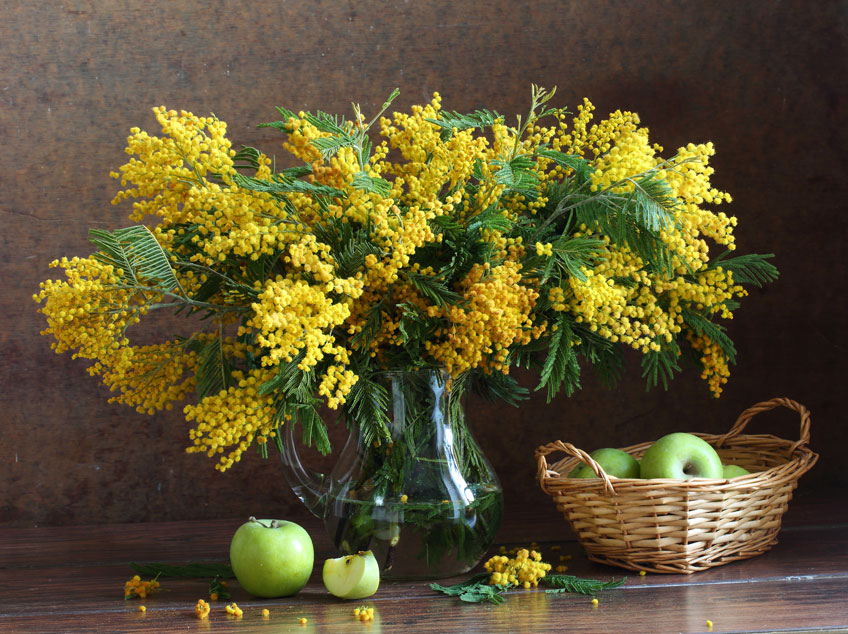
The Wattle, Full bloom and full of fragrance. Photo - MAR007 / Shutterstock.com
Fact file
Name: Acacia sp., commonly known as Wattle
Belongs: to the Fabaceae (pea) family
Origins: Australia, Africa, Asia, Pacific Islands.
Flowering: Late-winter through spring
Description:
The Wattle genus is home to over 1200 species of evergreen trees, shrubs and climbers. Variable foliage, often phyllodes, can be blue-grey to lime-green,
and creates the perfect foil for round heads or spikes of yellow, cream or white flowers from late-winter. They enjoy full sun or part shade. They’re
fast growing and generally short-lived (5-7 years), so they make good ‘nurse’ plants, regenerating well after fire, with the added benefit of being
nitrogen fixers.
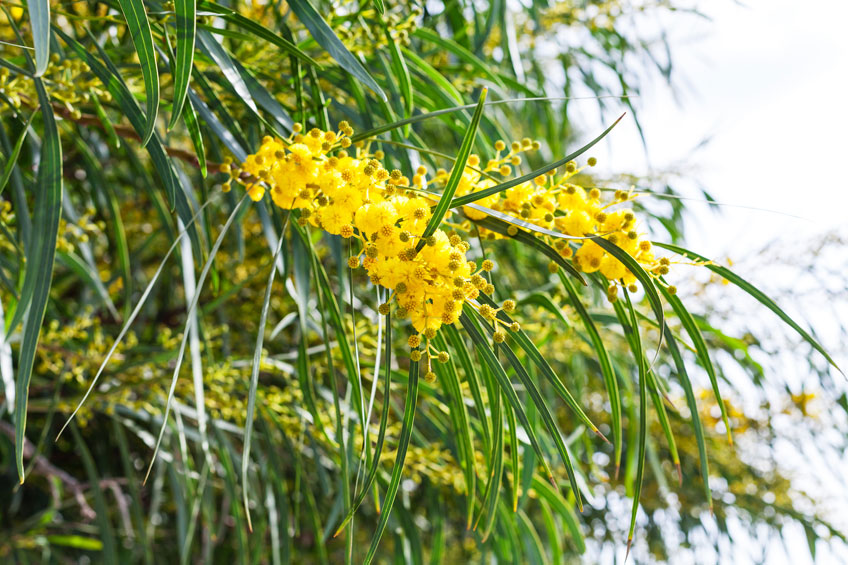
Wattles are growing all over the world. This one was photographed in Sicily. Photo - vvoe / Shutterstock.com
Now: Small, fluffy yellow flowers begin to appear, starting the party for those pollinator insects. Pick for vases.
Spring: Apply a light dose of Blood & Bone or native plant fertiliser. Top up the mulch around the base.
Summer: Once the flowers have faded, give the whole plant a light trim. Water once a week during hot spells.
Autumn: Now you can appreciate the foliage, and marvel at how much growth has occurred during the last season.
We love them
To bring winter colour into native gardens, as simple, stand-alone feature plants in the middle of a lawn (just keep it 1m clear of the trunk), as contrasting
fillers in blue gardens. As they’re tolerant of pollution, use them in land regeneration and to offer shelter from sun and wind for slower-growing
plants.
Warnings
‘Boy-pruning’ is not allowed - never prune hard into bare wood, they won’t recover. They can become environmental weeds in temperate zones – a light trim
straight after flowering will prevent seeds spreading. Also the lovely Cootamundra Wattle is classed as a weed is most areas.
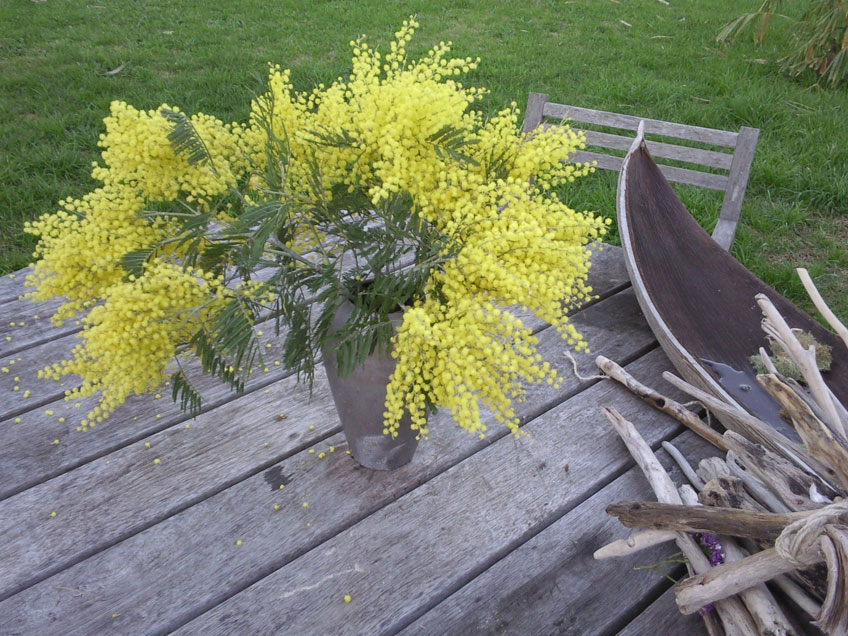
Weed or not. This wattle looks great on my back yard table. Photo - Linda Ross
What else?
Handy to increase pollination if you’re growing fruit and vegetables as they attract bees and other insects. And it’s not the cause of your hay fever –
wattle pollen just gets the blame because the flowers are so noticeable at the start of the allergy season. Grass pollen floats through the air and
is more likely to be the culprit!
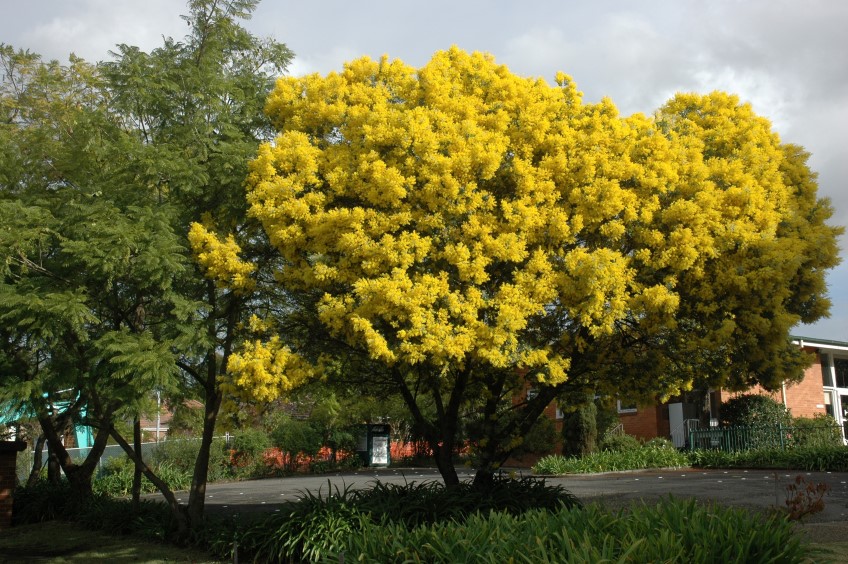
Give your wattle some space when planting. It will reward you 10 fold. Photo - Linda Ross
Some Favourites
Queensland’s Mt Morgan Wattle (Acacia podalyrifolia) is the first of the family to flower, in winter. It’s followed by the Cootamundra wattle
(Acacia podalyrifolia) and red, weeping ‘Scarlet Blaze’ (Acacia leprosa) from Victoria. Graham's favourite is the coastal myall (Acacia glaucescens)
which is hardy and long-lived, with red bark, silver foliage and long yellow rods of flower. Gardeners looking for good groundcover should check out
Acacia bailyana ‘Prostrata’ and for a sensational, weeping, lime green feature tree it’s hard to beat Acacia ‘Lime Magik’.
A. cultriformis or Knife-leaf Wattle is a tall shrub to 3m with blue-grey triangular ‘leaves’ and long sprays of fragrant yellow flowers.
A. buxifolia, Box-leaf Wattle, has golden balls of flowers against small greyish foliage, ‘Prostrate’ is the groundcover form stretching out to
2m.
A. chinchillensis or Chinchilla Wattle has very showy character growing to 2m tall, smothered in yellow flowers. This one is okay for pots too.
A. fimbriata ‘Dwarf’ spotted in the carpark of Sydney Wildflower West Nursery last week.
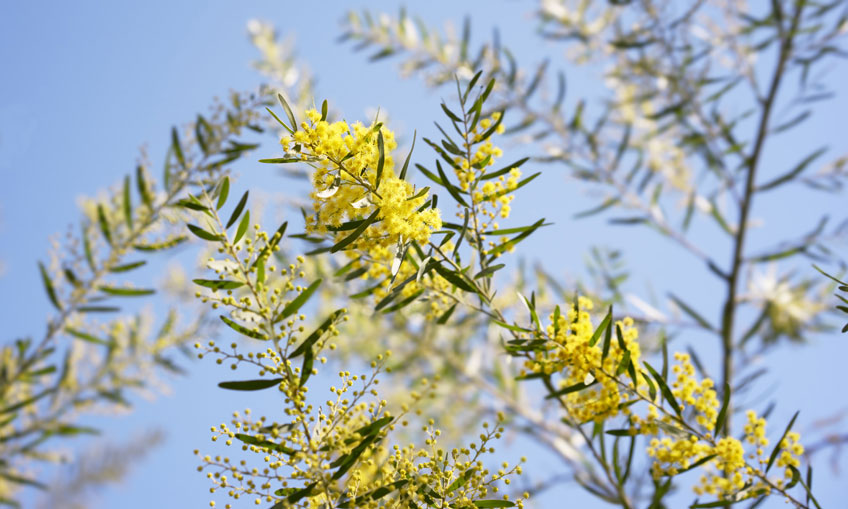
Acacia fimbrilata. Photo - Sherjaca / Shutterstock.com
A. amblygona, or scrambling wattle, low lying garden-friendly variety.
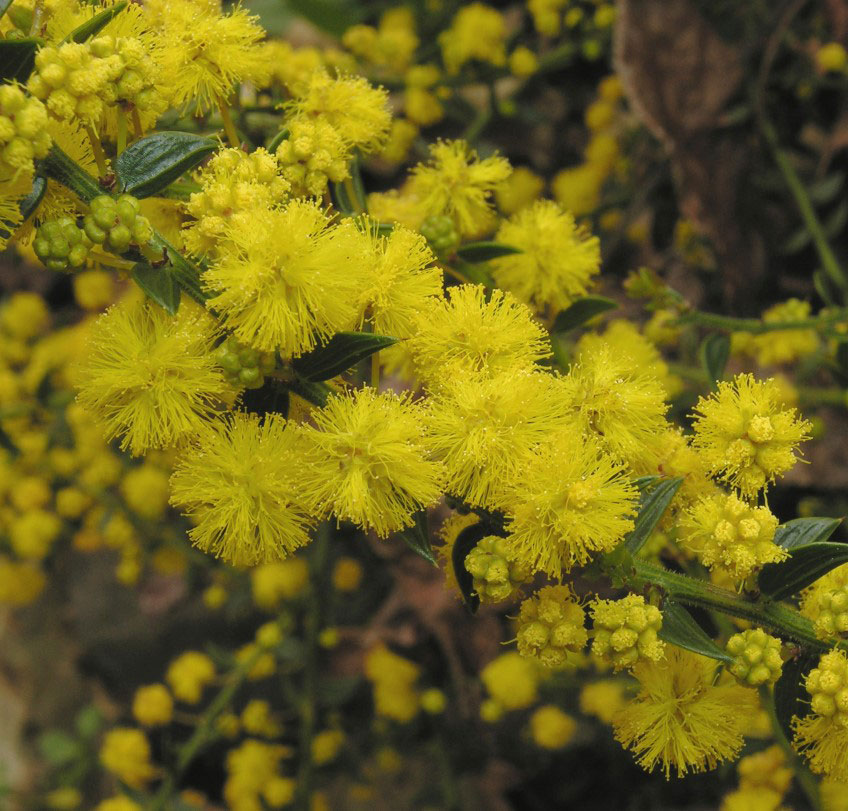
Acacia ambligona. Photo - J.Jones
Where to buy
Visit our Nursery Partners in winter and spring, or see specialist native plant growers such as the Sydney Wildflower Nursery year-round. If you’re after
tubestock endemic to your area, check out your local council’s nursery.
Another one
Golden Wattle, A. pycnantha
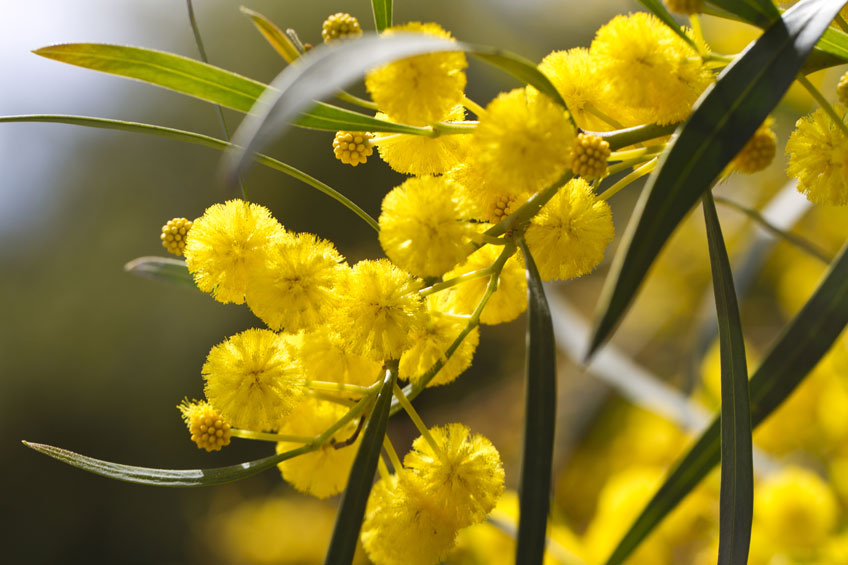
Our national floral emblem, Acacia pycnantha. Photo - Mauro Rodregues / Shutterstock.com
Yes, this one’s our national floral emblem,
as Graham wrote about on the website. A small tree with weeping branches of bright green foliage. Large perfumed yellow flowers in balls are held on
racemes.